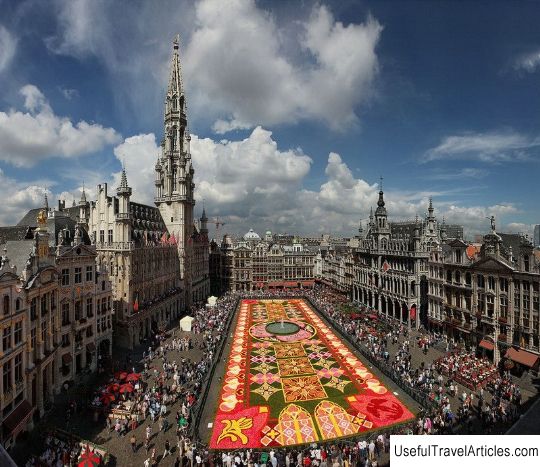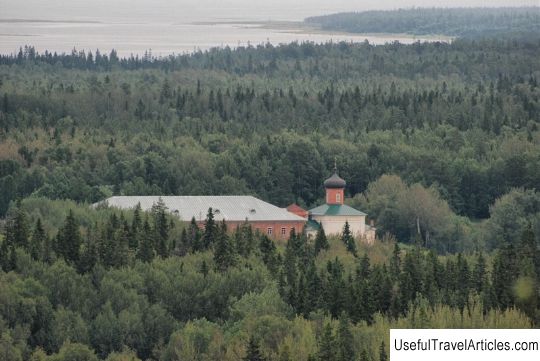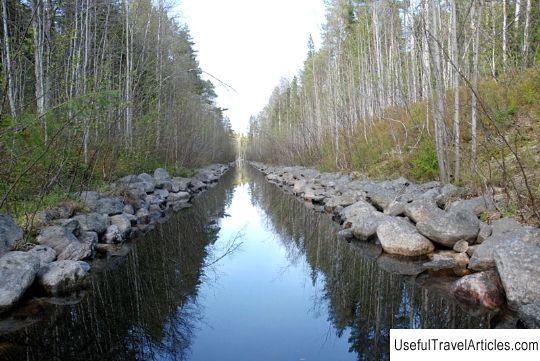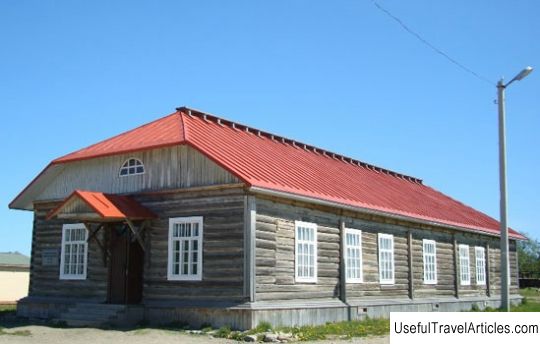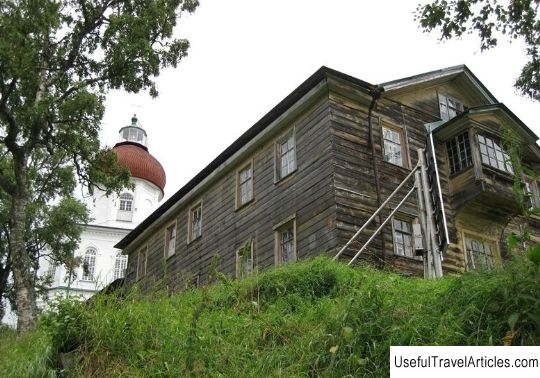Solovetsky Zosimo-Savvatievsky Spaso-Preobrazhensky Monastery description and photos - Russia - North-West: Solovetsky Islands
Rating: 7,6/10 (1022 votes) 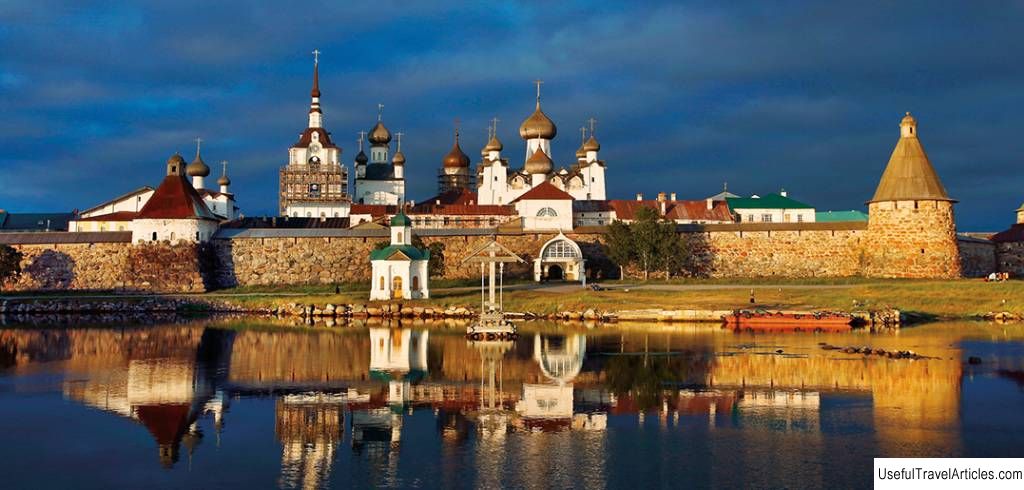
Solovetsky Zosimo-Savvatievsky Spaso-Preobrazhensky Monastery description and photos - Russia - North-West: Solovetsky Islands. Detailed information about the attraction. Description, photos and a map showing the nearest significant objects. Photo and descriptionThe most famous Russian monastery is located on the Bolshoy Solovetsky Island in the White Sea. Its fortress, made of huge northern boulders, is incredibly beautiful and picturesque. This monastery in Russia was called Northern Athos - so great was its significance. More than 50 local monks are canonized. In the Soviet years, the most terrible camp of the 30s, the ELEPHANT, was located here. Now the monastery is being revived and is still the greatest shrine of the Russian north. History of the monasteryThe legend considers Saints Savvaty and Herman to be the founders of the monastery, who settled on the Bolshoi Solovetsky Island in 1429. Savvaty soon died, and Zosima joined Herman, and they found a convenient place to found a monastery - by a small sea bay next to a fresh lake. The first buildings were wooden and only in the second half of the 16th century were they replaced by stone ones. Despite the extreme remoteness and cold climate, the monastery grew and developed. A whole farm soon grew around it, which occupied several islands - for example, a cattle yard was located on the island of Bolshaya Muksalma. In the 16th century, the famous Philip (Kolychev) was the abbot here. He was distinguished not only by piety, but also by a rare economic savvy, and besides, he enjoyed the favor of the tsar. Under him, the basis of the monastery's well-being was the salt industry: salt pans were built on the shore, mills and canals were built on the lake, and a brick factory was built next to the monastery. In 1621, the monastery was surrounded by a wall with a moat, and stone cell buildings appeared here. This place becomes a fortress successfully protecting the Russian north: over the course of the 16th century, the Swedes tried to capture it over and over again and were defeated. Dramatic events erupted in the second half of the 17th century, when the Solovetsky monks did not accept the reforms of Patriarch Nikon and raised a real armed uprising. They refused to pray according to the revised liturgical books sent from Moscow. The rebellious monastery had to be pacified by military force and fired from cannons, in 1676 it was taken by storm. The last assault on the monastery had to endure in the Crimean War - the British fired at it for 8 hours, but they did not manage to harm the powerful walls. The monastery continued to grow and grow rich. Since 1765, he becomes subordinate to the Synod, and not to the diocesan authorities. The economy is not even a city, but a whole small country: hermitages, salt pans, factories are based on the islands of the archipelago, its own printing house is set up, in the 19th century even its own hydroelectric power station and biological station. At the same time, the monastery serves as a prison for political criminals - the most terrible and most remote. Of the famous prisoners, one can name Peter Tolstoy, an associate of Peter I, who ended up in exile in Solovetsky at the very end of his life, and died here. The fate of this place after the revolution turned out to be tragic. The famous Solovetsky camp for special purposes (SLON) was located here, in which mainly political prisoners were kept - primarily the clergy and nobles. The camp was here until 1938. During the war, the school was located here, a museum has been set up here since 1967, and now the monastery again belongs to the church and shares the premises with the museum. Walls and towers The walls of the fortress with angular round towers are made of huge boulders, fastened with mortar. The foundations of these walls are seven meters thick. Three tower entrances to the monastery have additional fortifications - zhabs. Observation towers and cannon platforms were installed on the four-tier towers. Holes were cut in the walls for both upper and lower combat and ammunition rooms. In the 17th century, the moats protecting the fortress from the land were also lined with a boulder - one of these moats has survived. The monastery has 7 fortress towers and a holy gate with a gateway church of the Annunciation, built in 1601. In Soviet times, a museum was located here - now its main exposition has been transferred to Kolomenskoye. The current iconostasis is a joint project of the museum and the monastery, all of its icons are modern copies of genuine icons kept in museums in Russia. Cathedrals and churchesThe complex includes several churches. The most ancient of them are the Transfiguration and Assumption Cathedrals, erected under Abbot Philip (Kolychev). They were built taking into account the fact that the monastery could be attacked at any time, so that most of all they resemble fortress towers. The thickness of the walls of the Transfiguration Cathedral, for example, reaches five meters, and the walls stand somewhat at an angle - so, so that the cannonballs bounced off them. In its basement is one of the main shrines of the monastery - the burial of St. Zosimas. Frescoes of the 18th century have survived here, but the iconostasis was lost - some icons from it were distributed to all museums in the country. The iconostasis that can be seen in it now was made in 2002. The Church of the Assumption has combined church and economic functions. A huge refectory, warehouses, bakeries, etc. were attached to it, and the cellar chamber was located on the second floor. The church is practically devoid of decor, but extremely severe and expressive. Unfortunately, nothing remained of its interior. In addition to ancient churches, churches of the 19th century have been preserved here. This is Zosimo-Savvatievsky warm cathedral, built in 1859 on the site of the side-altar of the Transfiguration cathedral, which contained the burials of the founders of the monastery, Herman and Savvaty. The tomb became one of the side-altars of the new building. The author of the construction was the provincial architect A. Shakhlarev. The cathedral was restored in 2016. In the 19th century, a stone church appears on the site of the wooden chapel of St. Herman. In the 19th century, on the site of the previous building, a new five-domed St. Nicholas Church with a sacristy and a library was built. Civil buildings Several cell buildings have survived - they were mainly built in the 17th-18th centuries and were altered in the 19th century. The abbot's building consists of two parts - higher and wider, where the abbot lived, and a fraternal part, which was divided into identical cells for monks. Now the former abbot building is being rebuilt into a patriarchal residence. In the 18th century there were powder warehouses in the cellars in the governor's building, and in the XIX century workshops: a dyehouse, lithographic and jewelry workshops, on the upper floors - the governor's quarters and a hotel for noble pilgrims. The building of the icon-painting chamber of the early 17th century has been preserved - there was also a shoemaker's workshop and a hospital. The "Loose Chamber", where the sewing workshop was located, the "prosphora" building, where there were bakeries, and the "laundry building". The monastery houses the oldest Russian stone mill - it was built in the 17th century, and next to it is a bathhouse and a dryer - a grain warehouse. The mill is not only functional, but also beautiful: it is decorated with brick decor, and none of its facades repeats the other. SketesThe huge monastery complex includes several sketes. Some of them are located on the islands: the Andreevsky skete on Zayatsky island, the Nikolsky skete on the Kond island, and some on the island itself - for example, the Savvatievskaya hermitage not far from the monastery itself. In total, the monastery has 10 sketes in the archipelago and several farmsteads in large cities. Museum Part of the territory of the monastery is already in the first Soviet years became a museum repository. But the history of the museum officially dates back to 1957. Since 1992, the ensemble of the Solovetsky Monastery has been included in the UNESCO World Heritage List. Now the museum shares part of the premises with the monastery, and its director is the abbot of the monastery. It is planned to build a separate large building for the museum outside the monastery territory. Here is a rich exposition that tells about the history of the monastery. An important part of it is documents about the camp life of the 1930s, the terror and the prisoners who died here. The earliest archaeological materials date back to the first appearance of man on the White Sea - in the fifth millennium BC. Several megalithic stone labyrinths have survived on the Big Solovetskoye Lake, and the museum's exposition tells about their history. Notes
                                 We also recommend reading Church of Sao Tome (Iglesia de Santo Tome) description and photos - Spain: Toledo Topic: Solovetsky Zosimo-Savvatievsky Spaso-Preobrazhensky Monastery description and photos - Russia - North-West: Solovetsky Islands. |


